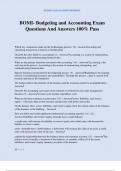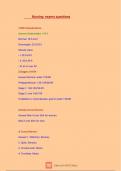Samenvatting
A practical guide for making theory contributions in strategic management - Summary
- Instelling
- Tilburg University (UVT)
A summary of the paper. This summary does not include chapter 3: OVERVIEW OF SPECIAL ISSUE ARTICLES as these are just examples on how the taxonomy can be used Makadok, R., Burton, R., Barney, J. A practical guide for making theory contributions in strategic management. 2018. Strategic Management...
[Meer zien]






